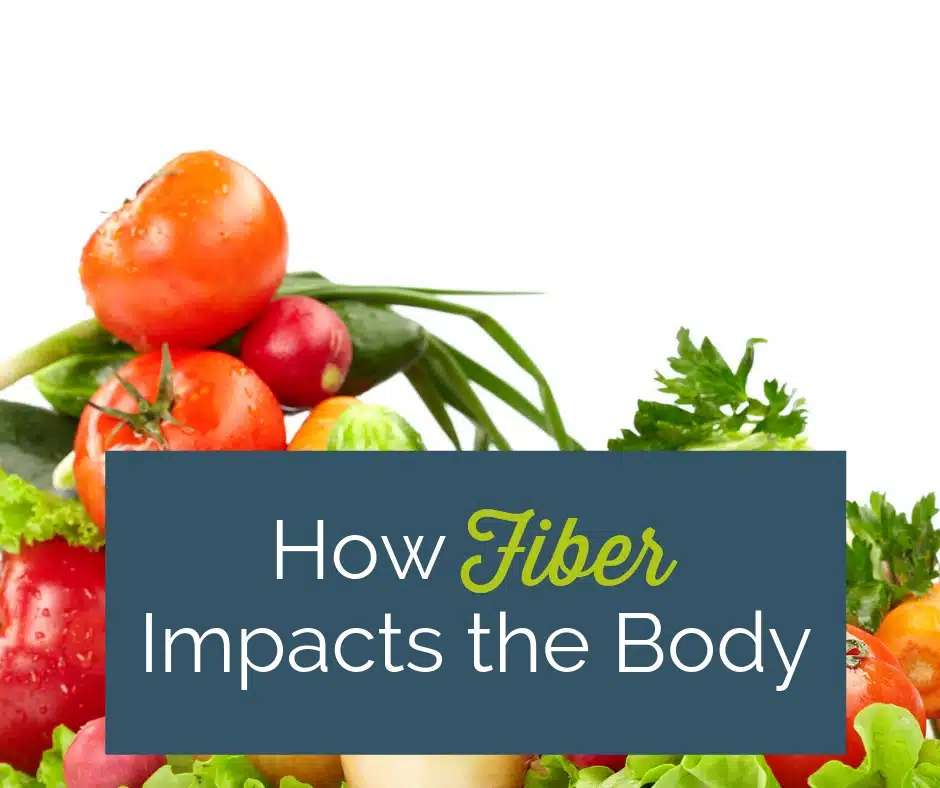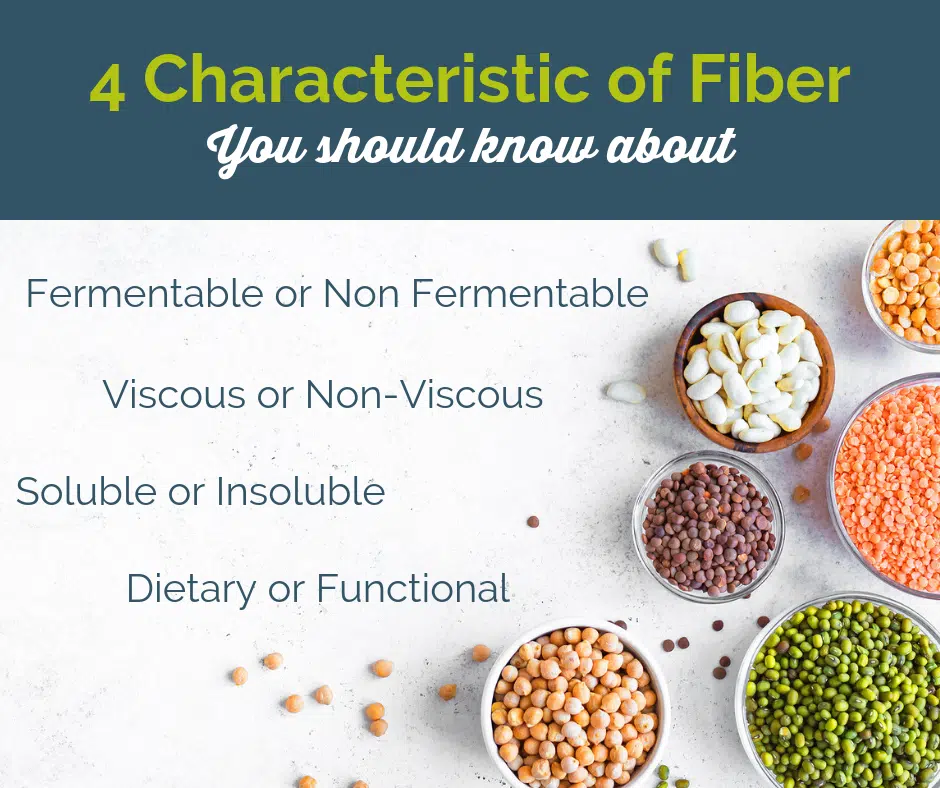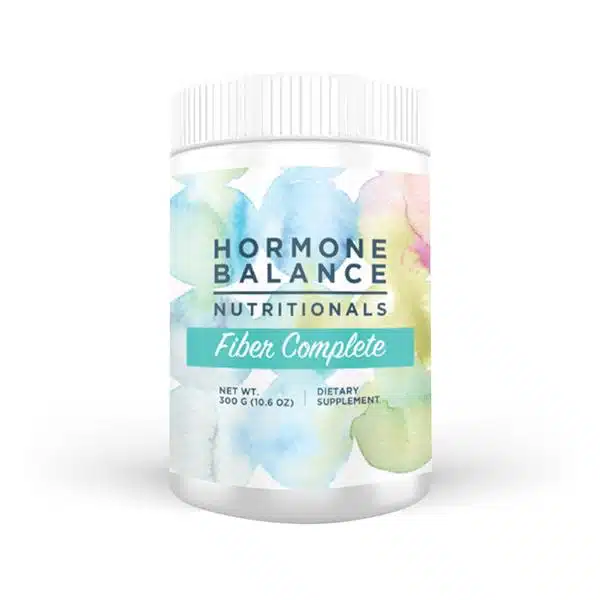 What you will learn in this article:
What you will learn in this article:
- How does fiber impact the body?
- Four characteristics of fiber
- Dietary sources of fiber
- Health benefits of each category of fiber
- How fiber helps balance hormones
Did you know that indigenous peoples consume as much as 40 grams of fiber per day?
This has been lost in our Western-style diet and not surprisingly that has led us to substandard health.
We need to consume at least 20 to 30 grams of fiber each day, but most Americans only get about 15 grams a day. More specifically, The U.S. Food and Nutrition Board of the Institute of Medicine recommends that women under 50 have a fiber intake of 25 g/day and over 50, have 21 g/day. The neglect of fiber in our diets can lead to serious health consequences.
How does fiber impact the body?
It all starts with the health of our intestines, which play a huge role in our immune function. Fiber feeds the beneficial bacteria that maintain the mucosal layer lining the small intestine, which in turn decides which molecules enter into our bloodstream, and which stay out. When that barrier is compromised, chronic inflammation or even autoimmune disease may occur.
Some of the diseases and disorders associated with a low fiber diet include metabolic syndrome (with associated PCOS), type 2 diabetes, weight gain/obesity, estrogen dominance, breast cancer, liver disease, Inflammatory Bowel Diseases (IBD) like Crohn’s and Colitis, and more. According to Hippocrates, “All disease begins in the gut.” Improving our fiber intake can help improve our digestion and lower our risk for disease - including those related to hormone imbalance.
Classifications of fiber
Fiber can be classified by four characteristics. Each of these categories of fiber has benefits for the digestive system and whole body health.
Of course, any given fiber will fit into four of the eight categories at once. For example, fiber in kiwi fruit is highly viscous, soluble, and fermentable dietary fiber. Also, a food may contain both soluble and insoluble fibers.
Dietary vs. Functional
Dietary fiber is fiber that can be obtained through the diet — naturally occurring in food. Types of dietary fiber include lignins (grains, beans, berries, nuts, & seeds) cellulose (greens & crucifers), beta-glucans (mushrooms, oats, grains), pectins (apples, pears, plums), and gums (agar, guar gum, xanthan gum).
Functional fiber is defined as fiber that is extracted from food and/or synthesized in the lab. The Institute of Medicine’s definition for functional fiber is that it “consists of isolated, non-digestible carbohydrates that have beneficial physiological effects in humans.” It is consumed as an additive in processed foods or through supplementation, such as psyllium supplements, chitosan supplements, Fructooligosaccharides (FOS) capsules or powder, or Galactooligosaccharides (GOS) capsules or powder.
Functional fiber is used for a particular purpose or function, such as a thickener in processed foods or as a prebiotic in dietary supplements.
Soluble vs. Insoluble
Soluble fiber attracts and dissolves in water, turning into a gel-like substance that helps to regulate the rate of digestion. Soluble fibers include gums (guar gum, xanthan gum), pectins (in apples and pears), mucilages (e.g. psyllium), inulin (asparagus, leeks dandelion root), and beta-glucans (oats, mushrooms).
Insoluble fiber is the basis of most plant-based products. Cellulose and lignans are insoluble fibers. “Insoluble” refers to the fact that it does not dissolve in water, but rather stays intact throughout the digestive system. One of the qualities of insoluble fiber is that it “sweeps” the colon – partly evacuating metabolized or “dirty” estrogens and prevents estrogen dominance. Some types of resistant starch qualify as insoluble fiber.
Fermentable vs. Non-Fermentable
Fermentable fiber is most often soluble fiber that is fermented/digested by gut bacteria in the large intestine. Fibers in this category include pectins, inulin, beta-glucans, oligofructose/fructo-oligosaccharides (FOS), and psyllium. Beans and legumes (including peas and lentils) are a great source of fermentable fiber which feeds your gut bacteria and makes for a robust immune system. Resistant starch also fits here, as it is fermented by the gut microbiota.
Non-Fermentable fiber is insoluble fiber that comes from the cell walls of plants and is not fermented by bacteria in the large intestine. It passes through the digestive system fairly intact. Cellulose and lignins are non-fermentable fiber. Non-fermentable fiber is like insoluble fiber, in that it helps “sweep” the colon, keeping it clean and clear, including evacuating metabolized or “dirty” estrogens.
Viscous vs. Non-Viscous
Viscous fiber is fiber that when consumed forms a viscous (“thick”), gel-like substance in the gut. Because of its ability to hold onto water and slow digestion, it tends to suppress appetite, leading to reduced intake of food. Examples of viscous fibers include beta-glucans, pectins, some gums (e.g. guar gum), mucilages (e.g. psyllium husk), and glucomannan.
Non-viscous fiber does not form a gel-like substance in the gut. Cellulose, lignins, inulin, FOS, wheat dextrin, wheat bran, and some hemicelluloses (like seeds) are non-viscous fiber. Resistant starch is also non-viscous.
Sources in Food (Dietary fiber)
Here’s a longer (not comprehensive) list of food sources for these different categories of fibers:
Soluble fiber – apples, pears, quinces, citrus fruits, kiwi, figs, nectarines, apricots, guavas, beets, carrots, brussels sprouts, avocados, sweet potatoes, broccoli, asparagus, onions, turnips, psyllium, mushrooms, oat bran, barley, corn, nuts, seeds, beans & legumes (lentils, peas), flaxseeds, sunflower seeds, hazelnuts.
Insoluble fiber – peel of apples and pears, kiwi berries, greens, vegetables (especially cruciferous), cucumbers, tomatoes, corn, wheat bran, oat bran, hull of whole grains, beans & legumes, potatoes and sweet potatoes, turnips, okra, coconut, cocoa, flax seeds, avocados, almonds & walnuts, sunflower seeds, popcorn. Resistant Starches.
Fermentable fiber – Beets, beans and legumes, onions and leeks, garlic, dandelion greens, chicory root, oats and barley, rice, psyllium, Jerusalem artichoke, yams, soy, and some fruit, like bananas. Sources of resistant starch and inulin, and guar gum.
Non-fermentable fiber – flax seed, chia seeds, greens, and other vegetables with edible stems (cellulose), root vegetables (carrots, parsley, horseradish), edible seeds in fruits (berries, tomatoes), green beans, peas, whole grain cereal, and wheat bran.
Viscous fiber – Miracle Noodles (glucomannan), beans & legumes, oats and barley, rice, flax, chia seeds, and psyllium.
Non-viscous – Greens and other vegetables (cellulose), edible seeds in fruits (berries, tomatoes), green beans, peas, whole grain cereal, and wheat bran. Resistant Starches.
Health benefits of each category of fiber
Soluble fiber
- Helps with satiety (feeling “satisfied” after a meal), but only if it’s also viscous. (study)
- Can help stabilize blood sugar – key in hormone balance. (study)
- Helps with weight management. (study)
- Prevents the reabsorption of estrogen – mitigating estrogen dominance. (study)
- May help prevent breast cancer (study).
- May help prevent cardiovascular disease by lowering LDL and non-HDL cholesterol levels (study) and by lowering blood pressure. (study)
- Improves IBS symptoms (source)
Insoluble fiber
- Acts as a “bulking” agent, increasing stool weight. This can help protect against intestinal diseases like diverticular disease, IBD, and colorectal cancer. (study)
- Helps increase the rate at which food moves through the digestive system (“transit time”), preventing constipation. (study)
(Read this article to learn how constipation can cause hormone imbalance).
- Decreases insulin resistance, reducing the risk for type 2 diabetes. (study)
Fermentable fiber
- Helps support a balanced immune system. (source 1, source 2) Lowers inflammation in the gut and systemically (study)
- Leads to the production of short chain fatty acids that help nourish the brain and gut. (source1, source 2)
Non-Fermentable fiber
(Most human studies are on fermentable fibers; here are a couple of conclusions drawn from animal studies):
- In an animal study, non-fermentable fiber protects against an autoimmune reaction to the nervous system, which has implications for Multiple Sclerosis (MS) in humans. (study)
- In an animal study, reduced weight gain by changing gut bacteria balance. (study)
Viscous fiber
- Can help reduce food intake, leading to weight loss – but only in the form of glucomannan.
- Improves blood sugar and insulin responses after a meal. (source)
- Lowers blood pressure. (study)
- Helps lower LDL and non-HDL cholesterol. (study)
- Can relieve constipation - for example prunes and mango. (study)
Non-Viscous fiber
- Same benefits as soluble or insoluble fiber (e.g. soluble non-viscous or insoluble non-viscous) or fermentable or non-fermentable fiber (e.g. fermentable non-viscous) without the benefits of viscosity.
Introducing Fiber Complete
Fiber Complete is a combination of natural fibers derived from fruits, vegetables, roots, seeds, and tree extracts. This product was designed with the Paleolithic diet in mind – the diet of our ancestors that our physiology may be most adapted to. Therefore, it is free of non-paleolithic food extracts such as grains (wheat, oat and rice bran) and legumes (peas, beans, and soy fibers).
Benefits: The Recommended Dietary Allowance (RDA) for fiber is 25-30 g/day, but most Americans only average about 15 g per day. Two teaspoons of Fiber Complete provide 4 grams of fiber – 3 g soluble and 1 g insoluble.
- Promotes proper intestinal function and bowel movement – may alleviate occasional constipation and diarrhea
- Helps with estrogen metabolism, evacuating metabolized or “dirty” estrogens
- Supports appetite regulation by increasing bulk and aiding a healthy rate of digestion
- Supports healthy glucose and insulin levels by assisting healthy stomach emptying and the appropriate passage of food throughout the intestines
- Helps maintain healthy cholesterol levels
- Promotes a healthy gastrointestinal system by helping to maintain a suitable environment of friendly bacteria in the gut
- Assists with healthy detoxification
- Supports proper weight management
Highlights
-
- 12 types of fiber: Fibregum tan acacia gum, creafibe cellulose, guar gum, cranberry seed powder, carrot fiber, inulin, citrus fiber, apple pectin, glucomannan, psyllium husk, flax, prune
- Free of non-paleolithic food extracts: free of grains (wheat, oat or rice bran) and legumes (peas, beans or soy fibers)
- gluten and lectin free, low allergenicity
- free of phytates (phytate fiber is found in grains, has an acid load and binds minerals – which interferes with their absorption)
- Contains both Soluble fiber and Insoluble fiber
- Guaranteed purity – free of toxic contaminants
- No artificial sweeteners, flavors or colorsMixes well and tastes great!
Recommended Use: Take 5 grams (approx. 2 tsp.) in water per day, as directed by your health care practitioner. Consume extra water when taking Fiber Complete to help support the healthy movement of fiber through the intestines. Increase dose slowly to allow the body time to adjust the higher levels of fiber. Do not take at the same time as any prescription medications.
Resources:
https://medicalxpress.com/news/2018-11-indigenous-populations-glimpse-dietand-western.html
https://www.ncbi.nlm.nih.gov/pubmed/17943494
https://academic.oup.com/advances/article/2/2/151/4644538
https://courses.lumenlearning.com/suny-nutrition/chapter/2-153-fiber/
https://medlineplus.gov/ency/article/002136.htm
https://www.mayoclinic.org/healthy-lifestyle/nutrition-and-healthy-eating/in-depth/fiber/art-20043983
https://www.ncbi.nlm.nih.gov/books/NBK27169/
https://www.hsph.harvard.edu/nutritionsource/carbohydrates/fiber/
https://www.ncbi.nlm.nih.gov/pubmed/17092830
https://www.ncbi.nlm.nih.gov/pubmed/28356275
https://www.ncbi.nlm.nih.gov/pubmed/15614200
https://www.ncbi.nlm.nih.gov/pubmed/22350922
https://www.ncbi.nlm.nih.gov/pubmed/26267774
https://www.fasebj.org/doi/10.1096/fj.12-219477
https://www.nature.com/articles/s41598-018-28839-3#ref-CR14
https://www.ncbi.nlm.nih.gov/pubmed/27863994
https://www.ncbi.nlm.nih.gov/pubmed/29092878
https://www.ncbi.nlm.nih.gov/pmc/articles/PMC2744625/
https://academic.oup.com/jn/article/148/1/7/4823705
https://www.ncbi.nlm.nih.gov/pmc/articles/PMC3705355/
https://www.ncbi.nlm.nih.gov/pmc/articles/PMC6315720/#B1-nutrients-10-01833
https://lpi.oregonstate.edu/mic/other-nutrients/fiber
https://academic.oup.com/advances/article/4/1/16/4591560
https://jandonline.org/article/S2212-2672(15)01386-6/fulltext#sec2.2


After reading your blog, I know this is one of my problems. I became so sensitive to food, histamine intolerance, herbs, supplements even tiny amounts of Vit C and B1. Bedridden due to Very Advanced stage of Adrenal Fatigue. No way to detox my liver without getting me worse. I have so many pains, insomnia, muscle weakness and can eat only 5 foods. I have no hope at all. Thanks for reading this.
Hi Elizabeth,
There can be many overwhelming challenges on our road to healing. Please send us an email at [email protected] and we have a recommendation (for complex health concerns) for you in case your are interested. ~HB Team
What would you recommend for
(1). Breakfast
(2) Lunch
(3) Supper
Your thoughts on Wheat Bread, please.
No wonder people are looking for ways to increase endurance. If you play sports, you know that the body adapts to the gradual increase in stress. Exercises and complexes, which were difficult at first, after a while are much easier to perform, so over time they can be complicated. For a faster effect, you can use testosterone booster
There are many natural ways to maintain a healthy digestive system – various herbal teas, fiber, probiotics or digestive enzyme supplements. On this site https://herb-era.com/ you can always find the best herbal supplements for any purpose. They have many beneficial effects on the human body, its health and overall vitality.